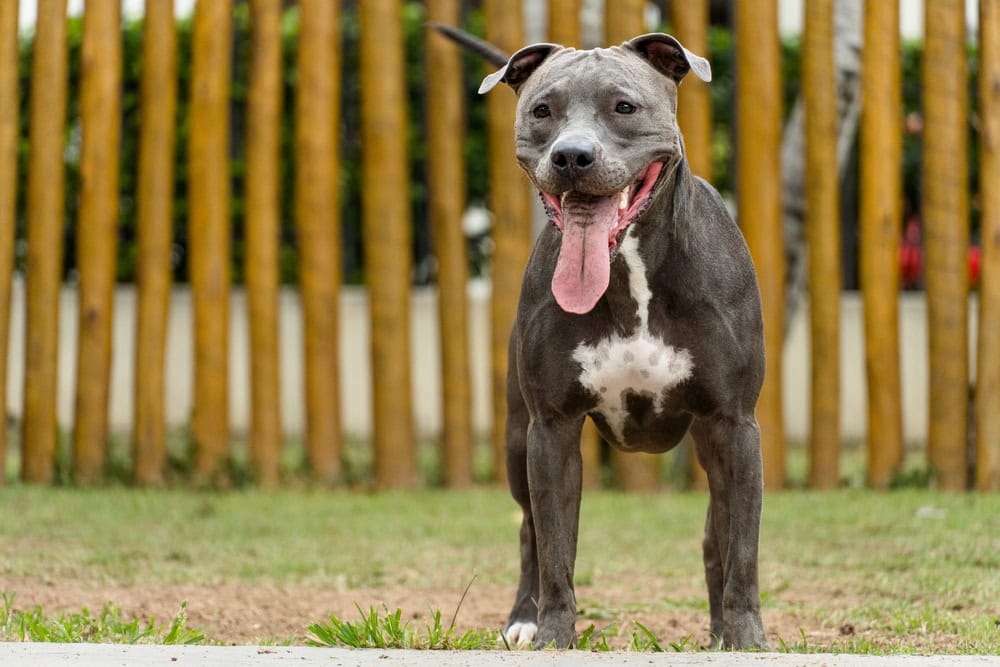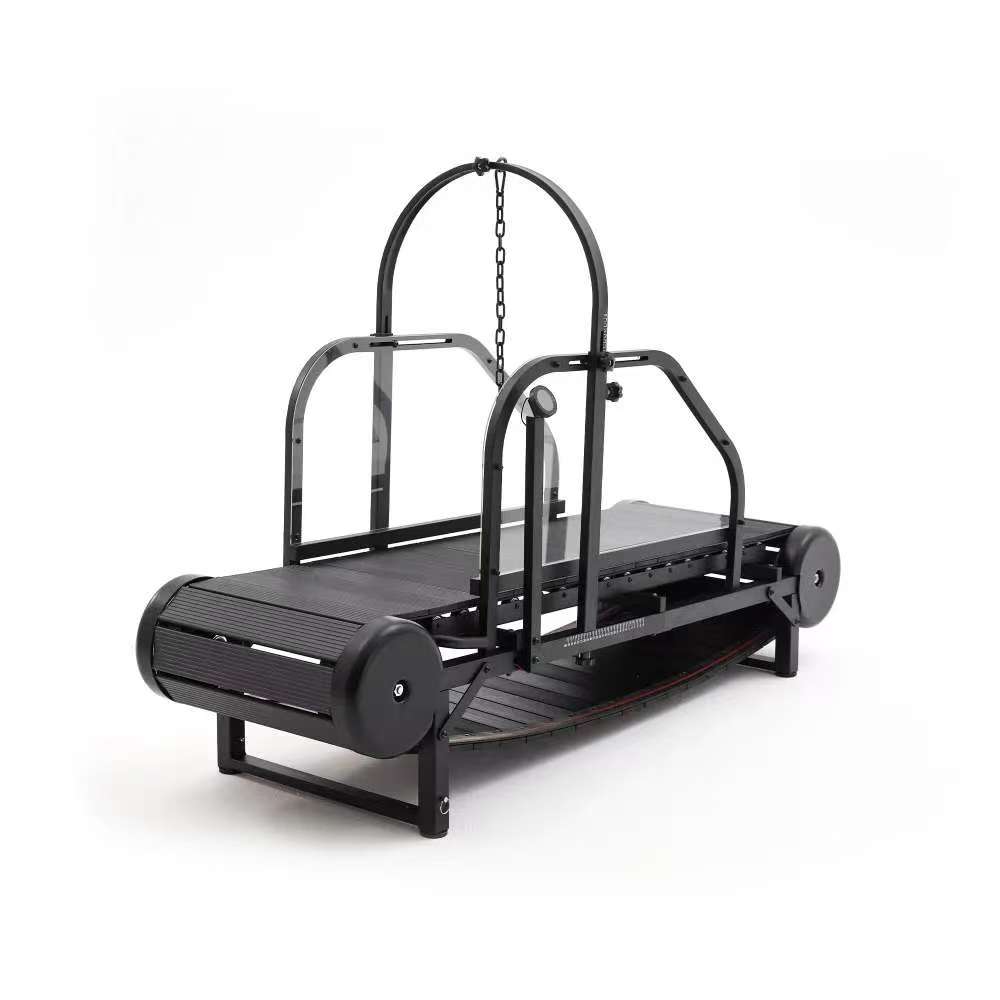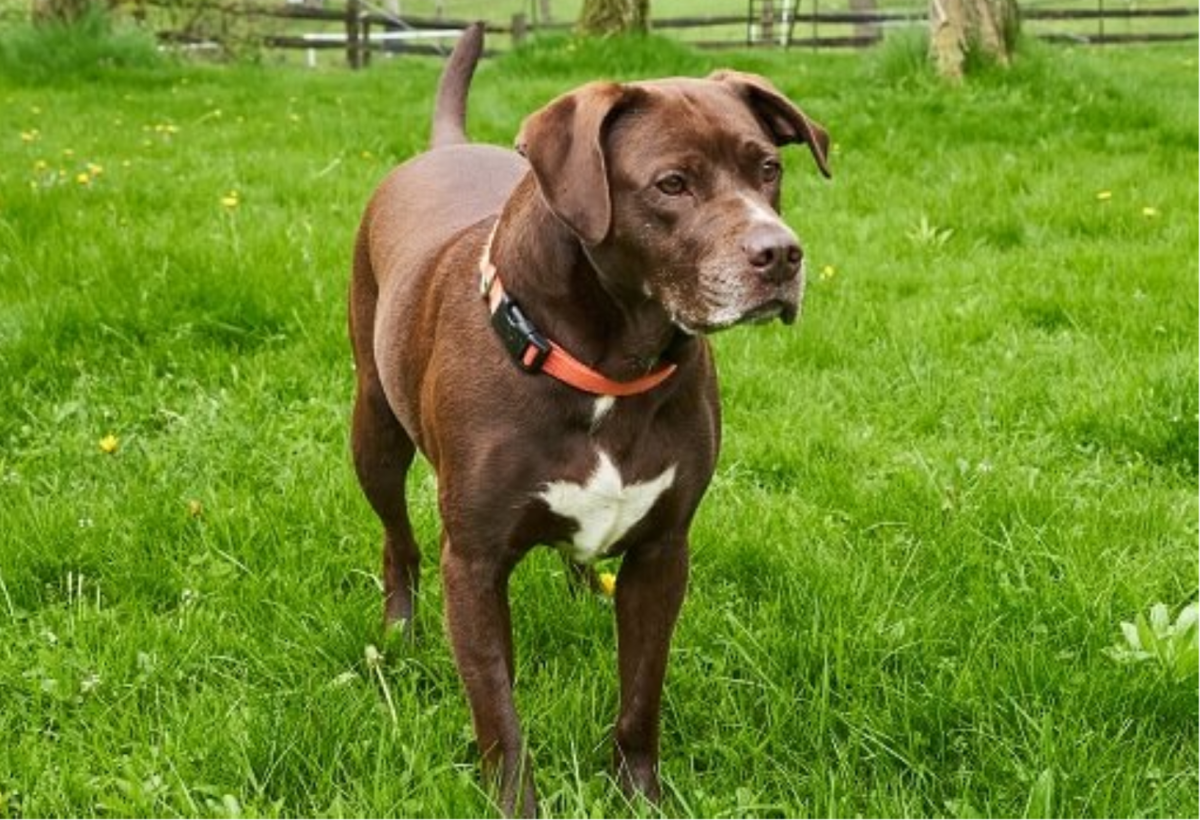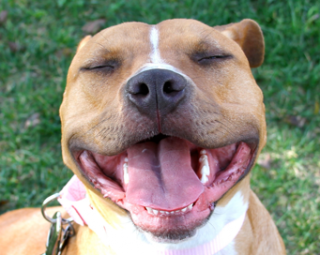American Pit Bull Terriers, often misunderstood due to their muscular build and historical association with dogfighting, are actually intelligent, loyal, and affectionate companions when properly trained and socialized. Renowned for their tenacity, strength, and high energy levels, these dogs require a structured training approach that not only channels their physical prowess but also nurtures their mental acuity. In this blog, we'll explore the key aspects of training an American Pit Bull Terrier and how integrating a non - electric dog treadmill into their routine can be a game - changer for both their physical fitness and behavioral development.
Key Takeaways
-
Begin treadmill training when your Pit Bull is six months old. Your dog should know basic commands.
-
Slowly introduce the treadmill. Let your dog check it out. Use treats and keep sessions short and fun.
-
Use positive reinforcement. Give treats and praise to encourage your dog. This helps build a strong bond during training.
-
Watch your dog for signs of stress or tiredness. Adjust the treadmill speed and session length to fit their fitness level.
-
Mix treadmill exercise with outdoor walks and playtime. This keeps your dog healthy, happy, and mentally active.
Understanding the American Pit Bull Terrier's Temperament

At the core of effective training lies a deep understanding of the breed's temperament. American Pit Bull Terriers are incredibly people - oriented and thrive on human interaction. They form strong bonds with their owners and are eager to please, which makes them highly trainable when positive reinforcement methods are employed. However, their natural protective instincts and territorial nature mean they can be wary of strangers and other animals if not socialized properly from a young age. It's crucial to recognize that aggression in Pit Bulls is often a result of improper training, neglect, or abuse rather than an inherent trait of the breed. With the right guidance, these dogs can become well - behaved, gentle members of the family.
Fundamental Training Needs
Obedience Training
Obedience training is the cornerstone of a well - behaved American Pit Bull Terrier. Commands such as “sit,” “stay,” “come,” “down,” and “heel” are essential for establishing control and ensuring the dog's safety in various situations. Given their strength, a lack of obedience can lead to dangerous scenarios, especially during walks or when interacting with other people and animals. Positive reinforcement techniques, such as using treats, praise, and play as rewards for correct behavior, are highly effective with Pit Bulls. Consistency is key; training sessions should be short, frequent, and follow a set routine to reinforce learning.
Socialization
Early and extensive socialization is non - negotiable for American Pit Bull Terriers. Exposing them to a diverse range of people, animals, environments, sounds, and experiences from puppyhood helps them develop into confident and well - adjusted adults. This includes interactions with children, other dogs of different sizes and temperaments, cats, and various public places like parks, busy streets, and pet stores. Socialization not only reduces the likelihood of aggression but also helps them learn appropriate social cues and behaviors. It's important to monitor their interactions and intervene if necessary to prevent any negative experiences that could reinforce fear or aggression.
Mental Stimulation
Pit Bulls have active minds that require constant engagement to prevent boredom and destructive behaviors. Puzzle toys, treat - dispensing toys, scent work, and obedience challenges are excellent ways to keep their brains occupied. Mental stimulation is as important as physical exercise for these dogs, as it helps reduce stress, anxiety, and the likelihood of developing behavioral problems. Incorporating training games into their daily routine not only enriches their lives but also strengthens the bond between the dog and the owner.
The Role of a Non - Electric Dog Running Machine in Pit Bull Training

Physical Conditioning
American Pit Bull Terriers are athletic dogs with high energy levels. A non - electric dog treadmill offers a controlled and efficient way to meet their exercise needs, regardless of weather conditions or time constraints. Unlike electric treadmills, non - electric models rely on the dog's own movement to propel the belt, which encourages natural running mechanics and builds strength and endurance. The adjustable resistance on some non - electric treadmills allows owners to gradually increase the intensity of the workout, simulating uphill runs or challenging terrains. Regular treadmill sessions help Pit Bulls maintain a healthy weight, strengthen their muscles, and improve cardiovascular health, all of which are crucial for their overall well - being.
Behavior Modification
For Pit Bulls with behavioral issues such as hyperactivity, restlessness, or aggression, a non - electric dog treadmill can be an integral part of a behavior modification plan. Exercise is a natural stress reliever, and by expending their excess energy on the treadmill, these dogs are less likely to exhibit destructive or aggressive behaviors. The structured environment of treadmill training also provides a sense of routine and discipline, which can be particularly beneficial for dogs that struggle with impulse control. Additionally, the mental focus required to stay on the treadmill and follow commands helps improve their concentration and obedience skills.
Reinforcing Obedience and Focus
Using a non - electric dog treadmill can serve as an excellent training tool to reinforce obedience commands and improve a Pit Bull's focus. Owners can incorporate commands such as “start,” “stop,” “slow down,” and “speed up” during treadmill sessions. When the dog responds correctly, they are rewarded with treats, praise, or a short break from the exercise. This not only makes the training more engaging but also helps the dog understand the importance of following instructions in a dynamic environment. Over time, treadmill training can enhance a Pit Bull's overall responsiveness and self - control.
Safety and Control
Non - electric dog treadmills offer a safer alternative for Pit Bull training compared to some outdoor activities. The enclosed belt and side rails prevent the dog from running off or getting into dangerous situations, such as encountering aggressive animals or traffic. This level of control is especially valuable for Pit Bulls that may be prone to chasing or have a high prey drive. Additionally, the controlled environment of the treadmill allows owners to closely monitor their dog's exertion levels and ensure they are not overexerting themselves, reducing the risk of injuries.
Preparing for the Non Electric Dog Treadmill
Assessing Readiness
Before you start using the non-electric dog treadmill, it’s crucial to assess your pup's readiness. Not every dog is immediately comfortable with a treadmill. Here are some signs that your dog is ready:
-
Your dog is at least six months old.
-
They have basic obedience skills, like sitting and staying.
-
Your pup shows curiosity about the treadmill.
If your dog seems hesitant or scared, take your time. You can introduce them to the treadmill gradually. Allow them to sniff and explore it without any pressure. This way, they’ll feel more at ease when it’s time to start training.
Comfortable Environment
Creating a comfortable environment is key to successful training. Here are some tips to help you set the stage:
-
Choose a Quiet Space: Find a location free from distractions. This helps your dog focus on the treadmill and the training process.
-
Use Positive Reinforcement: Keep treats handy! Reward your dog for showing interest in the treadmill. This encourages them to engage with it.
-
Adjust the Treadmill: When using it for the first time,gently push the treadmill track. This allows your dog to get used to the movement without feeling overwhelmed.
Remember, training your dog should be a fun experience. By assessing their readiness and creating a comfortable environment, you set the foundation for successful treadmill training. This exercise option for dogs can be a great addition to their routine, helping them stay fit and happy!
Training Techniques for Your Dog

Introducing the Treadmill
The first step is to make your pup comfortable with the treadmill. Start by letting your dog check out the treadmill when it’s off. This helps them get used to it without any stress. Here’s a simple way to introduce the treadmill:
-
Let Them Sniff: Let your dog sniff around the treadmill. This builds their curiosity and makes them feel safe.
-
Use Treats: Put treats on the treadmill to get your dog to step on it. This helps them think of the treadmill as a good thing.
-
Short Sessions: When your dog feels okay, tgive the track a gentle push. Keep the first few sessions short, about 5 minutes. Slowly increase the time as your pup gets used to walking on it.
Research shows that starting with short sessions and slowly increasing the time works best for American Pit Bull Terriers. It’s important to adjust the treadmill incline to fit your dog’s size and abilities.
Encouraging Movement
After your dog knows the treadmill, it’s time to get them moving. Here are some tips to help your pup walk:
-
Use a Leash: Keep your dog on a leash at first. This gives you control and helps guide them if they hesitate.
-
Engage with Toys: Use their favorite toys to get them to walk. Toss a toy just in front of the treadmill to encourage them to move forward.
-
Be Patient: If your dog seems unsure, don’t rush them. Let them start moving at their own pace. Celebrate small wins, like taking a few steps.
Remember, the goal is to make treadmill exercise fun. Using toys and positive interactions will help your dog feel more confident and willing to walk on the treadmill.
Positive Reinforcement
Positive reinforcement is a great tool for training your dog. It helps build a strong bond and encourages good behavior. Here’s how to use positive reinforcement during treadmill training:
-
Reward Immediately: As soon as your dog takes a step or shows interest in the treadmill, reward them with a treat or praise. This encourages the behavior you want to see.
-
Create a Routine: Set a regular training schedule. Dogs like routines, and knowing when to expect treadmill time can make them excited.
-
Mix It Up: Keep training sessions interesting by changing the rewards. Sometimes use treats, other times offer praise or playtime. This keeps your pup engaged and eager to join in.
By using positive reinforcement, you help your dog connect the treadmill with fun and rewards. This not only boosts their confidence but also makes the treadmill training enjoyable for both of you.
Safety Tips During Exercise
Monitoring Behavior
When your dog is on the treadmill, watch them closely. This is very important for their safety and comfort. Here are some signs to look for:
-
Signs of Stress: If your dog seems anxious, like whining or trying to jump off, stop the treadmill right away. You want them to feel safe and confident while exercising.
-
Fatigue: Look for signs that your dog is tired. If they seem exhausted, it’s time for a break. Short sessions are better than long ones, especially at first.
-
Body Language: Notice your dog’s body language. If they look tense or uncomfortable, pause the session and let them relax.
By keeping a close eye on your dog, you can make sure they have a good experience on the treadmill. This attention helps them feel more confident and willing to try again in the future.
Duration
Choosing the right time for your dog’s treadmill exercise is very important. Here’s how to do it well:
Limit Session Length: For the first few times on the treadmill, keep sessions short—about 5 to 10 minutes. As your dog gets more confident and stronger, you can slowly make the sessions longer. Aim for a maximum of 20 minutes each time.
Adjust for Fitness Level: Every dog is unique. Think about your dog’s age, fitness level, and any health problems. If your dog is healing from an injury or surgery, ask your vet for advice on time.
By carefully managing time, you help your dog enjoy their treadmill experience while keeping them safe. This way, they stay fit and build a positive relationship with exercise.

In conclusion, training an American Pit Bull Terrier requires a holistic approach that addresses their physical, mental, and behavioral needs. A non - electric dog treadmill can be a powerful ally in this training journey, offering numerous benefits for their physical fitness, behavior modification, and obedience training. By understanding the breed's temperament, implementing proper training techniques, and incorporating the treadmill into a well - structured routine, owners can help their Pit Bulls become healthy, happy, and well - behaved companions. With patience, consistency, and the right tools, the unique qualities of the American Pit Bull Terrier can shine through, dispelling misconceptions and showcasing them as the remarkable dogs they truly are.
FAQ
What age should I start training my American Pit Bull Terrier on a treadmill?
You can start training your dog on a treadmill when they are at least six months old. At this age, they usually have enough physical strength and coordination to handle the treadmill safely.
How long should each treadmill session last?
For beginners, keep each session short—about 5 to 10 minutes. As your dog gets used to the treadmill, you can gradually increase the duration to a maximum of 20 minutes.
Can I use treats during treadmill training?
Absolutely! Using treats is a great way to encourage your dog. Reward them for stepping on the treadmill or walking. This positive reinforcement helps them associate the treadmill with fun and rewards.
Is treadmill exercise enough for my dog?
While treadmill exercise is beneficial, it shouldn't be the only form of activity. Combine it with outdoor walks and playtime to provide a well-rounded exercise routine for your dog.
What should I do if my dog seems scared of the treadmill?
If your dog shows fear, take it slow. Allow them to explore the treadmill while it's off. Use treats and praise to build their confidence before turning it on.









0 Comments